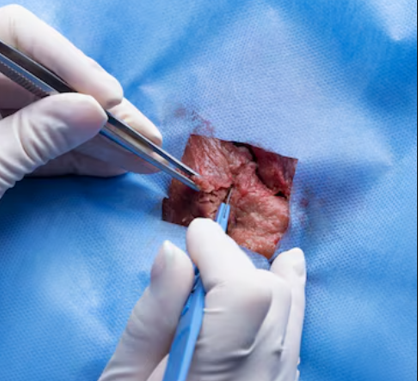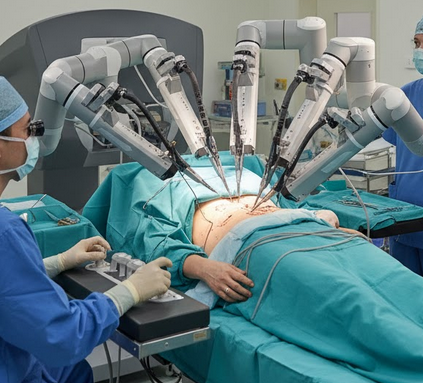1. Ritlecitinib (LITFULO™)
- Approval Date: June 23, 2023
- Indication: Severe alopecia areata in adults and adolescents aged 12 and older
- Mechanism: Selective Janus kinase (JAK) 3 inhibitor
- Efficacy: In clinical trials, 23% of patients achieved ≥80% scalp hair coverage after six months
- Administration: Oral, once daily
- Note: First FDA-approved treatment for individuals under 18 Wikipedia+2trichology+2NAAF+2PubMed Central+3NAAF+3Wikipedia+3PubMed Central+2Wikipedia+2Wikipedia+2trichology+4HairScience+4NAAF+4
2. Deuruxolitinib (LEQSELVI™)
- Approval Date: July 26, 2024
- Indication: Severe alopecia areata in adults
- Mechanism: Selective JAK1/2 inhibitor
- Efficacy: In clinical trials, 33% of patients achieved ≥80% scalp hair coverage after 24 weeks
- Administration: Oral, twice daily
- Note: Commercial release is currently on hold due to a court injunction following a patent infringement lawsuit HairScience+6trichology+6Wikipedia+6Wikipedia+5PubMed Central+5Wikipedia+5NAAF+1trichology+1
3. Clascoterone (Winlevi™)
- Approval Date: August 2020
- Indication: Acne vulgaris
- Development: Under investigation in higher concentrations for androgen-dependent scalp hair loss (brand name: Breezula)
- Mechanism: Topical antiandrogen that targets androgen receptors in hair follicles
- Administration: Topical cream
- Note: Currently in clinical trials for hair loss; not yet FDA-approved for this indication Healthline+3Wikipedia+3Wikipedia+3New York Post
4. Pyrilutamide (KX-826)
- Development Status: Undergoing Phase III clinical trials for male androgenic alopecia
- Mechanism: Topical nonsteroidal antiandrogen
- Efficacy: Early trials show significant improvement in hair count
- Administration: Topical application
- Note: Available as a cosmetic product (Koshine) in some markets; not FDA-approved for medical use HairScience+4Wikipedia+4Wikipedia+4Wikipedia+3Reddit+3Pcfdp+3Wikipedia+2AP News+2Wikipedia+2
💡 Emerging and Adjunctive Therapies
Low-Level Laser Therapy (LLLT)
- Devices: FDA-cleared helmets and combs (e.g., LaserCap HD+, iRestore, Theradome)
- Mechanism: Stimulates hair follicles through red light exposure
- Efficacy: Studies show increased hair count and thickness after 16–26 weeks of use
- Note: Often used in conjunction with other treatments Vogue+4Glamour+4Pcfdp+4myhair.ai+1Pcfdp+1
Minoxidil (Oral Form)
- Status: Currently prescribed off-label
- Efficacy: Early studies suggest it may be as effective as topical minoxidil with fewer side effects
- Administration: Oral pill
- Note: Not FDA-approved specifically for hair loss Pcfdp+1AP News+1Glamour+3AP News+3HairScience+3myhair.ai+13Wikipedia+13Wikipedia+13PubMed Central+1HairScience+1
🧬 Promising Investigational Treatments
PP405 (UCLA Discovery)
- Development Status: Early-stage clinical trials
- Mechanism: Activates dormant hair follicles
- Efficacy: Preliminary results show significant hair regrowth
- Administration: Topical application
- Note: Not yet FDA-approved New York Post+1Wikipedia+1myhair.ai+1New York Post+1
ET-02 (Eirion Therapeutics)
- Development Status: Phase II clinical trials planned for 2025
- Mechanism: Topical application targeting hair follicle regeneration
- Efficacy: Pre-clinical studies indicate a six-fold increase in non-vellus hair count
- Administration: Topical application
- Note: Not yet FDA-approved AP News+8New York Post+8Verywell Health+8Reddit+1Wikipedia+1New York Post+3Buckhead Hair Restoration+3HairScience+3
✅ Summary Table
| Treatment | Type | FDA Status | Mechanism | Administration | Notes |
|---|---|---|---|---|---|
| Ritlecitinib (LITFULO™) | Oral JAK Inhibitor | Approved (2023) | JAK3 inhibition | Daily | First for adolescents |
| Deuruxolitinib (LEQSELVI™) | Oral JAK Inhibitor | Approved (2024) | JAK1/2 inhibition | Twice daily | Commercial release on hold |
| Clascoterone (Breezula) | Topical Antiandrogen | Under Trial | Androgen receptor blockade | Topical | Not FDA-approved for hair loss |
| Pyrilutamide (KX-826) | Topical Antiandrogen | Under Trial | Androgen receptor blockade | Topical | Available as cosmetic product (Koshine) |
| Low-Level Laser Therapy | Light Therapy | FDA-Cleared Devices | Photobiomodulation | Varies | Used with other treatments |
| Minoxidil (Oral) | Vasodilator | Off-Label Use | Vasodilation | Daily | Not FDA-approved for hair loss |
| PP405 | Topical Treatment | Under Trial | Follicle activation | Topical | Not FDA-approved |
| ET-02 | Topical Treatment | Under Trial | Follicle regeneration | Topical | Not FDA-approved |




